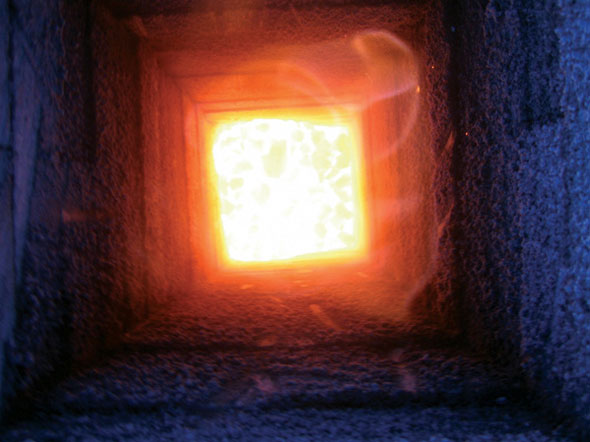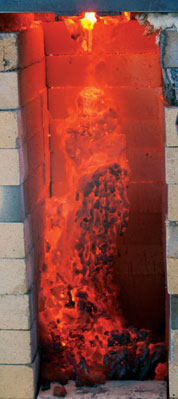Way of the metallurgist
 |
| Photo: Jon Kellar |
 |
| Photo: Jon KellaFor the Japanese samurai, the long-bladed katana sword embodied honor and the prestige of their warrior class. For Jon Kellar, metallurgical engineering professor at South Dakota School of Mines and Technology, it embodies a perfect design project for his students. |
For the Japanese samurai, the long-bladed katana sword embodied honor and the prestige of their warrior class. For Jon Kellar, metallurgical engineering professor at South Dakota School of Mines and Technology, it embodies a perfect design project for his students.
When he was searching for the minerals to meld the sword's famously pure steel, called tamahagane, co-workers pointed to the Homestake Mine. Faculty members working there on the proposed Deep Underground Science and Engineering Laboratory said the watery sludge pumped out of the mine was full of the needed iron ore.
Kellar was inspired to create the class project by a NOVA TV special about the traditional months-long method of forging samurai swords. Although a few swords are still crafted as art pieces in Japan, Kellar believes his class will be the first Western group to attempt the ancient blacksmithing methods.
“The process encompasses our complete discipline,” he says. “It's the whole enchilada.”
Through trial and error, Kellar found that the ore from Homestake Mine contains too many chemical impurities to meld a high-quality sword. Even so, it was useful in helping the team hammer down its techniques.
“We're making progress continually and, boy, we've learned a lot,” Kellar says.
Though the general technique is the same as that used 700 years ago, the group has newer technology at its disposal and has modified some of the ancient practices. For instance, it will use bamboo mats, rather than prisoners' corpses, to test its sword's performance.
The process starts when students take the iron-rich sludge and push it through a meat grinder to make muddy pellets. Another group draws out impurities from the pellets using a clay furnace, which melds iron and carbon together to create two types of tamahagane. Finally, students forge the two types together: strong, high-carbon steel for the cutting edge and flexible, shock-absorbing, low-carbon steel for the core of the sword.
Kellar hopes to have a sword, or even two, completed by spring.
Sara Reardon
Click here to download the pdf version of this article.






